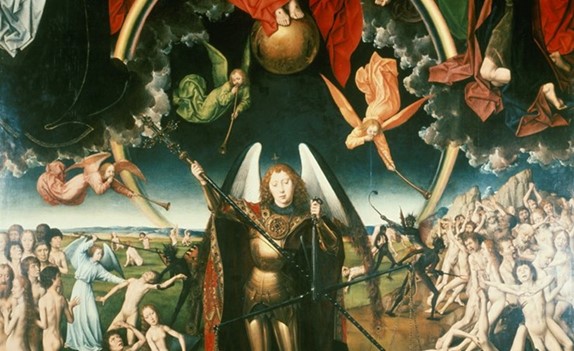
Much of the structure of this season was devised by Pope Gregory the Great (ca. AD 600): he composed liturgical texts and arranged the lectionary for Masses and the Daily Office; and he shortened what had been a six-week season of preparation for Christmas to four weeks. But that is not at all the full story. The Season of Advent, as we know it, melds distinct and overlapping elements.
Not until the 9th Century did Advent become the beginning of the church year. Originally, it seems to have concluded the church year, at least in Rome. The year, at Rome, began with Christmas Eve; and so Advent, the ending of the year, focused on the end of time, with the Second Coming of Christ and Judgement Day. Thus, Advent in Rome acquired those two elements: Scriptural, as with the Nativity narratives, and apocalyptic. Both pertain to advents or comings of Christ, first at Christmas and then at the end of time.
Yet another element arose not in Rome but in France and centers not on Christmas, which was not universally observed for quite some time, but on the Epiphany, 6 January, an older feast. In the Gallican church, that of France, the Epiphany was a time for baptisms, since it celebrated Christ’s Baptism along with the visit by the Magi, both manifestations of His glory. Baptism requires preparation through instruction and prayer and fasting, so Advent was a three-week period of such preparation from ca. the 4th Century. The period was lengthened ca. AD 500 to 40 days, beginning on the Feast of St Martin of Tours, 11 November. This ascetical practice, which included fasting thrice a week, influenced the Roman understanding of the season, to the point that Advent is sometimes referred to as “the little Lent.” Hence, the penitential purple is the liturgical color for Advent through most of the West (blue, as used here at St Luke’s, follows Sarum usage, i.e., the custom of Salisbury Cathedral). This purple is lightened a hue to rose on Advent III, Gaudete Sunday, when the penitential discipline is relaxed for a day before one doubles down for the prayerful push to Christmas, i.e., once Christmas displaced the Epiphany as the main Incarnational Feast.
The Roman themes and patterns influenced the Gallican, especially from the time of Charlemagne (ca. AD 800), with the result that today our basically four-week, or at least four-Sunday Season of Advent features the double theme of Christ’s two Comings, with the consequent galvanic expectancy of both the Incarnation and the Apocalypse, with a tinge of penitential preparation. This year, listen for those strains in the lessons and the collects, confident in the love and mercy of our Lord, Who, in the words of the Advent III collect, however much we are “sorely hindered by our sins,” in His “bountiful grace and mercy” will “speedily help and deliver us.”
In faith,
William Bonnell
